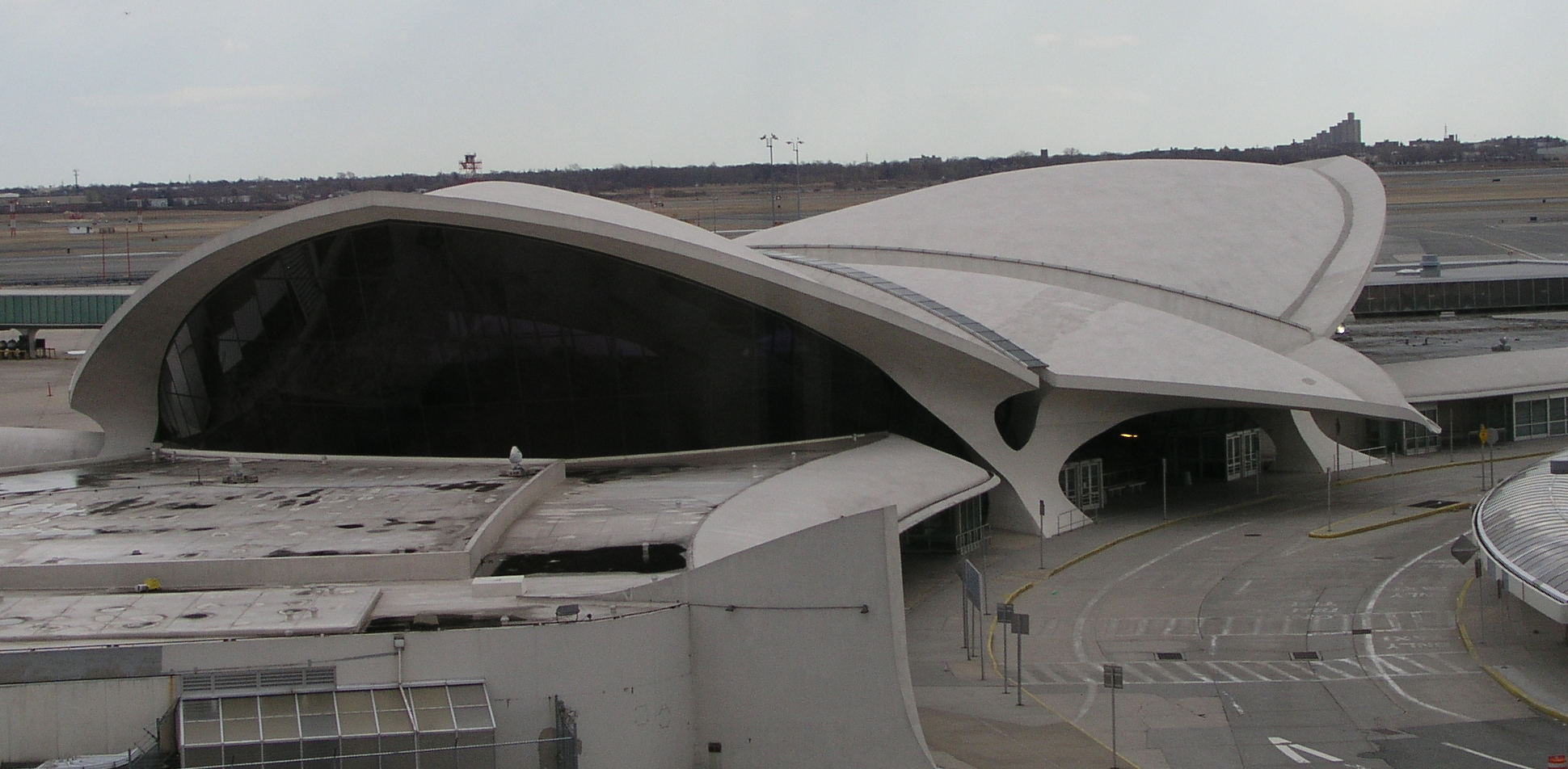Shell roof
Shell roofs are made from structural ‘skins’ where the shell material is thin in section relative to the other dimensions of the roof and undergoes relatively little deformation under load.
They are commonly used where a building interior needs to be free from intermediate walls or columns that might support a more conventional flat or pitched roof, such as; libraries, theatres, leisure centres, airport and railway terminals, and so on.
Shell roofs can be ‘flat’, but are typically curved, assuming a cylindrical, domed, paraboloid or ellipsoid shape. The curvature of shell structures benefits from the same structural efficiency as arches, which are pure compression forms with no tensile stresses. Because of their structural efficiency less material is generally needed compared to more traditional roofs. However, a restraining structure such as an edge beams is required to prevent the shell from ‘spreading’.
Shell roofs may be:
- Single shells such as the dome of the Pantheon in Rome.
- Multi-shell roofs such as Eero Saarinen’s JFK International Airport in New York.
- Reinforced with structural ribs, such as Jørn Utzon’s Sydney Opera House.
- Lattice structures, such as Norman Foster’s Great Court at the British Museum in London.
They are most commonly constructed using insitu reinforced concrete, however, other materials such as and timber and steel may be used for reinforced, lattice or composite structures.
NB the term 'shell and core' refers to a developer's base build that is subsequently fitted out before the building is occupied. For more information see: Shell and core.
[edit] Related articles on Designing Buildings Wiki
- A-frame house.
- Arches.
- Barrel vault.
- Cantilever.
- Conoid shell.
- Domestic roofs.
- Folded plate construction.
- Hyperbolic paraboloid.
- Long span roof.
- Megastructure.
- Pendentive dome.
- Portal frame.
- Purlins.
- Shell and core.
- Sydney Opera House.
- Tensile structures.
- Tension.
- Tension cable and rod connectors.
- The history of fabric structures.
- Types of dome.
- Types of roof.
- Vault.
[edit] External references
- ‘Building Construction Handbook’ (6th ed.), CHUDLEY, R., GREENO, R., Butterworth-Heinemann (2007)
Featured articles and news
Professional practical experience for Architects in training
The long process to transform the nature of education and professional practical experience in the Architecture profession following recent reports.
A people-first approach to retrofit
Moving away from the destructive paradigm of fabric-first.
International Electrician Day, 10 June 2025
Celebrating the role of electrical engineers from André-Marie Amperè, today and for the future.
New guide for clients launched at Houses of Parliament
'There has never been a more important time for clients to step up and ...ask the right questions'
The impact of recycled slate tiles
Innovation across the decades.
EPC changes for existing buildings
Changes and their context as the new RdSAP methodology comes into use from 15 June.
Skills England publishes Sector skills needs assessments
Priority areas relating to the built environment highlighted and described in brief.
BSRIA HVAC Market Watch - May 2025 Edition
Heat Pump Market Outlook: Policy, Performance & Refrigerant Trends for 2025–2028.
Committing to EDI in construction with CIOB
Built Environment professional bodies deepen commitment to EDI with two new signatories: CIAT and CICES.
Government Grenfell progress report at a glance
Line by line recomendation overview, with links to more details.
An engaging and lively review of his professional life.
Sustainable heating for listed buildings
A problem that needs to be approached intelligently.
50th Golden anniversary ECA Edmundson apprentice award
Deadline for entries has been extended to Friday 27 June, so don't miss out!
CIAT at the London Festival of Architecture
Designing for Everyone: Breaking Barriers in Inclusive Architecture.
Mixed reactions to apprenticeship and skills reform 2025
A 'welcome shift' for some and a 'backwards step' for others.























